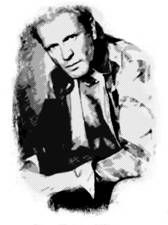(nee Lonich, now Coleridge)

American born, now London-based Plavka is a walking, talking, singing world of beauty in every sense of the word. More than just fairy dust in Jam & Spoon's project material, she has a status all of her own. Her legendary voice is delicate and enchanting, a seductive blend of satin with defining, irresistible colours. It is unmistakeable and unique. A perfect fit for the Jam & Spoon sound.
 Plavka commenced vocal training in 1985 and by 1989 was attached to the Santa Monica Opera as Soprano. She left Los Angeles in 1990, came to London and a year later joined the UK dance outfit The Shamen. Following the success the band enjoyed with their numerous hits, she joined then on their `Shamen Synergy Tour' in April 1991, playing several major venues in the UK and appearing on many TV programmes such as The Chart Show, The Big E and Dance Energy to name a few. The energetic Plavka accompanied them on the European leg of the journey, even clocking up performances in Moscow and Siberia!
Plavka commenced vocal training in 1985 and by 1989 was attached to the Santa Monica Opera as Soprano. She left Los Angeles in 1990, came to London and a year later joined the UK dance outfit The Shamen. Following the success the band enjoyed with their numerous hits, she joined then on their `Shamen Synergy Tour' in April 1991, playing several major venues in the UK and appearing on many TV programmes such as The Chart Show, The Big E and Dance Energy to name a few. The energetic Plavka accompanied them on the European leg of the journey, even clocking up performances in Moscow and Siberia!
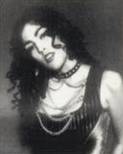 Later that year she formed The Rising High Collective with Caspar Pound (R.I.P.), a group which would go on to enjoy several successful releases, most famously with their critically-acclaimed Fever Called Love (1992). Other Rising High gems followed - 'Reach' and 'No Deeper Love', leading to live performances on the UK's Hitman & Her TV show, as well as The Ministry of Sound in London, Universe in Bath, The Limelight in New York and the Mayday rave in Berlin.
Later that year she formed The Rising High Collective with Caspar Pound (R.I.P.), a group which would go on to enjoy several successful releases, most famously with their critically-acclaimed Fever Called Love (1992). Other Rising High gems followed - 'Reach' and 'No Deeper Love', leading to live performances on the UK's Hitman & Her TV show, as well as The Ministry of Sound in London, Universe in Bath, The Limelight in New York and the Mayday rave in Berlin.
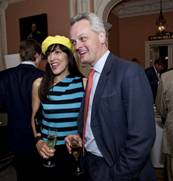 Plavka's involvement with Jam & Spoon commenced with Mark being introduced to her during the Berlin Loveparade in 1992. He had already listened to her on 'The Shamens Hyperreal' and liked what he heard. Plavka's first debut with them was on the gigantic worldwide hit 'Right in the Night'. Following this, she was very quickly welcomed as the third member, frequently co-writing, performing live, and always delivering a fantastic vocal performance.
Plavka's involvement with Jam & Spoon commenced with Mark being introduced to her during the Berlin Loveparade in 1992. He had already listened to her on 'The Shamens Hyperreal' and liked what he heard. Plavka's first debut with them was on the gigantic worldwide hit 'Right in the Night'. Following this, she was very quickly welcomed as the third member, frequently co-writing, performing live, and always delivering a fantastic vocal performance.
In 1994 Jam & Spoon's follow-up single 'Find Me' (Odyssey to Anyoona) was released sending her out into the world again. She also released a solo single ('Maximum Motion') and was the vocalist on Sound Assembly's track 'Live in New York'. So a busy 1994 for Plavka, especially with the touring and numerous TV shows for Jam & Spoon to boot (among them Italy, Finland, Germany and France where she appeared live on Dance Machine and 17,000 people!). Her efforts and hard work undoubtedly contributed to Jam & Spoon being nominated for Best European Dance Act. 1995 saw her continue to enjoy success with the duo with 'Angel' and 'Kaleidoscope Skies' in 1997 (from the Kaleidoscope album). A song she co-wrote, it was a huge hit and a precursor to her writing talent later found on the 'Tripomatic Fairytales 3003' album a few years later.
 Plavka is still busy in the industry and very much in demand, evidence of her reputation earned over the years. Check out for example J. Nitti's 'Surrender' or her undisputable 'Plavkalicious' album. She still sings live too (lucky for us), if not at a festival then quite possibly at The Brompton Club in London. Living in the capital and happily married to Christopher Coleridge, they have a beautiful baby daughter Jade who may be tempted to follow in mum's footsteps one day, and who knows? Maybe even try to take over mum's spotlight one day...
Plavka is still busy in the industry and very much in demand, evidence of her reputation earned over the years. Check out for example J. Nitti's 'Surrender' or her undisputable 'Plavkalicious' album. She still sings live too (lucky for us), if not at a festival then quite possibly at The Brompton Club in London. Living in the capital and happily married to Christopher Coleridge, they have a beautiful baby daughter Jade who may be tempted to follow in mum's footsteps one day, and who knows? Maybe even try to take over mum's spotlight one day...
One thing is for sure - if she does, it'll be a hard act to follow.

(Markus Löffel)
(27.11.1966 - 11.01.2006)
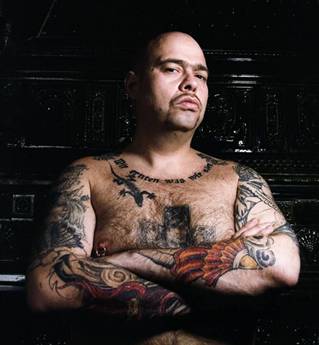
"To stimulate creativity, one must develop the childlike inclination for play and the childlike desire for recognition."
Albert Einstein
"I am Rock’n’Roll"
Mark Spoon, 1997
Every person is a world unto himself, and not many can say their life is an exciting, multifarious, extreme and vibrant rollercoaster as was Mark Spoon’s (aka Spacy Trancer). A classification all by himself, one thing was certain - life was dynamic when Mark Spoon was around. His reputation for partying and living life to the full often preceded him. He defied all clichés, could be provocative, direct, vociferous (especially with the media) and played the backstage casanova. He emanated strength and was the rock’n’roller of the dance music world to the core.
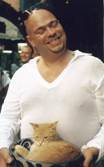 But with all the tough exterior he was really a big softie at heart. Those closest to him knew him better, knew the more important side – the intense but massively generous Mark, abundant with ideas, free in his expression of love for those he most cared for, namely his friends, family and the colleagues, many of whom he respected. Like a rough-cut diamond his greatest value was within. He personified energy while playing the jester to Jam el Mar’s sage, and was his friend’s connection to the club world. In the studio he knew what sounds fitted with which beats. A gentle giant then, blessed with a big heart, a giant ego and an even more gigantic talent.
But with all the tough exterior he was really a big softie at heart. Those closest to him knew him better, knew the more important side – the intense but massively generous Mark, abundant with ideas, free in his expression of love for those he most cared for, namely his friends, family and the colleagues, many of whom he respected. Like a rough-cut diamond his greatest value was within. He personified energy while playing the jester to Jam el Mar’s sage, and was his friend’s connection to the club world. In the studio he knew what sounds fitted with which beats. A gentle giant then, blessed with a big heart, a giant ego and an even more gigantic talent.
Let’s reverse back a few years…
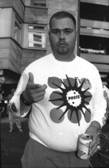 Mark first started DJ’ing when he was 13 and in this capacity found himself ever more regularly performing sets, slowly gaining recognition as time went on. He was raised by his grandmother and it broke his heart when she died. He escaped from home and got into all sorts of trouble with the police, collecting a few juvenile sentences along the way. He left school and qualified as a chef, quickly abandoning that career behind to focus on music, At 16 years old he discovered the advantages of hiding behind a mask of his own creation, an exterior image as a protection of sorts from the outside world. Mark met with a 16-year-old Moses Pelham (Moses P) to form a Hip Hop project, using his size and facial demeanour to command respect. He fell into a gig when an act pulled out and he took over. It was to be the start of a meteoric rise and having tasted the scene, fascinated by the hedonism and atmosphere, he moved ever closer to being with the right people. He knew what clubbers want to hear in the developing Trance movement in Frankfurt. Most of all, he knew his worth while his ambition knew no limits.
Mark first started DJ’ing when he was 13 and in this capacity found himself ever more regularly performing sets, slowly gaining recognition as time went on. He was raised by his grandmother and it broke his heart when she died. He escaped from home and got into all sorts of trouble with the police, collecting a few juvenile sentences along the way. He left school and qualified as a chef, quickly abandoning that career behind to focus on music, At 16 years old he discovered the advantages of hiding behind a mask of his own creation, an exterior image as a protection of sorts from the outside world. Mark met with a 16-year-old Moses Pelham (Moses P) to form a Hip Hop project, using his size and facial demeanour to command respect. He fell into a gig when an act pulled out and he took over. It was to be the start of a meteoric rise and having tasted the scene, fascinated by the hedonism and atmosphere, he moved ever closer to being with the right people. He knew what clubbers want to hear in the developing Trance movement in Frankfurt. Most of all, he knew his worth while his ambition knew no limits.
In 1990, Mark was hired as the first A & R Manager for Logic Records (established by Michael Münzing and Luca Anzilotti aka ‘Snap!’). As the ‘Artist & Repertoire’ manager, he listened to demos all day and likened this role to a ‘virgin giving birth to a child’ – a comment that clearly defined the hard work but also the rewards associated with finding new and original artists. He spoke good English and was a fast learner though also noted for his manner as somewhat abrupt and concise. A producer once called him to ask if he had heard his tape, to which Mark transmitted the rattling tape in the bin down the phone line!
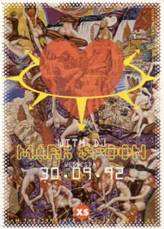 One of Mark’s most famous ‘discoveries’ picked up and cultivated was the talented Dr.Alban (Nwapa Alban), a Nigerian dentistry student living in Sweden, and working as a DJ to pay for his studies, who had sent a demo to Mark. He also arranged and did remixes of Dr.Alban’s tracks, as well as other artists, when the very concept of a ‘remix of a song’ was still in its infancy. He left the A & R post at the end of 1991. Concurrently in the early 1990’s he celebrated early success as a (predominantly) Techno DJ at Sound Factory in Frankfurt. These were mostly warehouse parties based on the British club scene model at that time, organized by music producer and DJ Alex Azary. It was Mark in conjunction with Alex who opened the XS Club (now known as The Box) in Frankfurt in 1991.
One of Mark’s most famous ‘discoveries’ picked up and cultivated was the talented Dr.Alban (Nwapa Alban), a Nigerian dentistry student living in Sweden, and working as a DJ to pay for his studies, who had sent a demo to Mark. He also arranged and did remixes of Dr.Alban’s tracks, as well as other artists, when the very concept of a ‘remix of a song’ was still in its infancy. He left the A & R post at the end of 1991. Concurrently in the early 1990’s he celebrated early success as a (predominantly) Techno DJ at Sound Factory in Frankfurt. These were mostly warehouse parties based on the British club scene model at that time, organized by music producer and DJ Alex Azary. It was Mark in conjunction with Alex who opened the XS Club (now known as The Box) in Frankfurt in 1991.
It is also in 1991 when the hitherto Markus Löffel becomes ‘Mark Spoon’ and one of the ‘Holy Trinity’ in Frankfurt comprising of Sven Väth, DJ Dag and, of course, Mark Spoon. He never had a larger grin on his face than when he was dropping hard and unrelenting beats sending clubbers into oblivion. It is the same Mark Spoon who would later play at mass raves with 100,000 people as well as the legendary Loveparade, controlling the crowds with his great big beaming grin. He had found his Mecca.
 Mark sold the XS club two years later in 1993, having established in the marketplace common terms such as ‘intelligent’ and ‘ambient’ techno, to move onto other projects. From these, of greatest significance was becoming the most famous resident DJ at the legendary Dorian Gray club from 1993 to 1997 when DJ Dag stepped down to move to the Omen club. Located underneath Frankfurt am Main’s huge airport, Dorian Gray was very special. It had the kind of atmosphere that allowed you to ‘bathe’ in the music and was incomparable to any other club before or since. Thanks to his ever-growing reputation, Mark drew a huge crowd coming to hear him play his Sunday morning shift, earning him a front-row place in Frankfurt’s DJ Hall of Fame.
Mark sold the XS club two years later in 1993, having established in the marketplace common terms such as ‘intelligent’ and ‘ambient’ techno, to move onto other projects. From these, of greatest significance was becoming the most famous resident DJ at the legendary Dorian Gray club from 1993 to 1997 when DJ Dag stepped down to move to the Omen club. Located underneath Frankfurt am Main’s huge airport, Dorian Gray was very special. It had the kind of atmosphere that allowed you to ‘bathe’ in the music and was incomparable to any other club before or since. Thanks to his ever-growing reputation, Mark drew a huge crowd coming to hear him play his Sunday morning shift, earning him a front-row place in Frankfurt’s DJ Hall of Fame.
Early trappings of success rewarded him handsomely - a bathroom at his apartment designed by Phillipe Starck, New York artist Rodriguez painted the canvas that hung next to a collection of platinum discs. He bought the pinball machine featured in Madonna’s “Sex” book at an auction and owned Frankfurt’s biggest poster of Jimi Hendrix. He drove to gigs in an aluminium Audi with his right-hand man Fedi Choukair, his devoted assistant and protector for 10 years, aged 18 when he met an earlier incarnation of Mark determined to become a star.
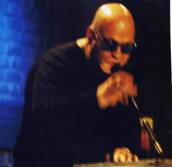 Mark’s vocation as a career DJ sent him globe-trotting on a regular basis, highlights of which are many. He was in every place, and at every event that mattered: Tribal Gathering in the UK, numerous Mayday appearances, the Berlin Loveparade year after year (and with millions watching him on TV, plus the 200,000 at the Grosser Stern witnessing his historic three sets at the last one ever).As a resident DJ in Germany alone, he appeared on a regular basis at: The Omen in Frankfurt, Kraftwerk KW in Munich, the Pleasure Dome in Augsburg, Mach 1 in Nuernberg, the Airport in Wuerzburg, the Tribehouse in Neuss, the U60311 in Frankfurt and the Kalkscheune in Berlin. His sets were more original than technical – attention grabbing chops and drops, he would mix different styles into a mosaic that made for an authentic repertoire. He shared Jam’s approach to applying his attention to music by studying it, even making notes and deriving his inspiration from a plethora of original sources. His ten-hour sets were stuff of legend, and most of all he loved it every minute of it.
Mark’s vocation as a career DJ sent him globe-trotting on a regular basis, highlights of which are many. He was in every place, and at every event that mattered: Tribal Gathering in the UK, numerous Mayday appearances, the Berlin Loveparade year after year (and with millions watching him on TV, plus the 200,000 at the Grosser Stern witnessing his historic three sets at the last one ever).As a resident DJ in Germany alone, he appeared on a regular basis at: The Omen in Frankfurt, Kraftwerk KW in Munich, the Pleasure Dome in Augsburg, Mach 1 in Nuernberg, the Airport in Wuerzburg, the Tribehouse in Neuss, the U60311 in Frankfurt and the Kalkscheune in Berlin. His sets were more original than technical – attention grabbing chops and drops, he would mix different styles into a mosaic that made for an authentic repertoire. He shared Jam’s approach to applying his attention to music by studying it, even making notes and deriving his inspiration from a plethora of original sources. His ten-hour sets were stuff of legend, and most of all he loved it every minute of it.
 With all this going on he also found time to produce and remix. After the huge success of Jam and Mark’s remix of “The Age of Love” remix work had started flooding in, and each one treated as a creative musical venture by the duo, as opposed to just a simple re-arrangement. Typically turning up at the studio 15 minutes late, he’d be a fountain of original and sometimes almost anarchic ideas that would feed and complement Jam’s inspirational force. The result was pure magic. These were two friends that had a spiritual connection, two artists that would understand each other beyond words, combining in an eclectic force to be reckoned with.
With all this going on he also found time to produce and remix. After the huge success of Jam and Mark’s remix of “The Age of Love” remix work had started flooding in, and each one treated as a creative musical venture by the duo, as opposed to just a simple re-arrangement. Typically turning up at the studio 15 minutes late, he’d be a fountain of original and sometimes almost anarchic ideas that would feed and complement Jam’s inspirational force. The result was pure magic. These were two friends that had a spiritual connection, two artists that would understand each other beyond words, combining in an eclectic force to be reckoned with.
From 1994 to 1999 Mark’s life was perpetual work and play. I recall Muzik mag from around the year 2000 in which they announced the “Caner of the Year” award should go to Mark Spoon for his ‘hard partying’. It’s true that this phase of his life was one of non-stop engagements and a lifestyle pushed to the maximum. He lived for every moment, he chose how he lived it and made no apologies. There was the often a fine line between where the work ended and the fun began. He didn’t care about the media comments, his mission was the music, and thus emanated a fierce persona and great charisma. Especially fitting as he was in full-swing promoting the pumping ‘Time to Burn’ around this time.
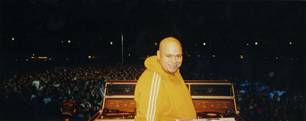 Let’s keep in mind the big softie inside, the eloquent and quick-witted but also often shy Mark, for example turning up at a club discreetly watching people from the side. He was sensitive and charming and always worried that as a human being he could be so much more. He looked after his friends well, took them to the best restaurants, cooked for them with great panache, opened his heart to them. His list of friends reads like a who’s who of the music and film worlds. He drank and partied with the best of them, and when it was time to go to Ibiza (his ‘second home’ as he called it) he would leave club land, where he always considered it a privilege to play, to take a trip around the island where solitude welcomed him with open arms. If he had lived longer he probably would have retired to the island.
Let’s keep in mind the big softie inside, the eloquent and quick-witted but also often shy Mark, for example turning up at a club discreetly watching people from the side. He was sensitive and charming and always worried that as a human being he could be so much more. He looked after his friends well, took them to the best restaurants, cooked for them with great panache, opened his heart to them. His list of friends reads like a who’s who of the music and film worlds. He drank and partied with the best of them, and when it was time to go to Ibiza (his ‘second home’ as he called it) he would leave club land, where he always considered it a privilege to play, to take a trip around the island where solitude welcomed him with open arms. If he had lived longer he probably would have retired to the island.
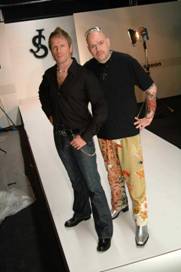 With dance music changing and new blood taking the helm, these DJ’s playing something he did not regard or respect any more angered him, and he made it known publicly in 2003 at the German Dance Awards. It was a Mark that felt the innovation had left the music, that it had become bland and formulaic. As a driving force behind Jam & Spoon it was his strong philosophy, shared with Jam, to always challenge themselves, their writing, and their own image as perceived by others.
With dance music changing and new blood taking the helm, these DJ’s playing something he did not regard or respect any more angered him, and he made it known publicly in 2003 at the German Dance Awards. It was a Mark that felt the innovation had left the music, that it had become bland and formulaic. As a driving force behind Jam & Spoon it was his strong philosophy, shared with Jam, to always challenge themselves, their writing, and their own image as perceived by others.
As a resident DJ, in Germany alone he appeared on a regular basis at: The Omen in Frankfurt, Kraftwerk KW in Munich, the Pleasure Dome in Augsburg, Mach 1 in Nuernberg, the Airport in Wuerzburg, the Tribehouse in Neuss, the U60311 in Frankfurt and the Kalkscheune in Berlin. His ten-hour sets were stuff of legend.
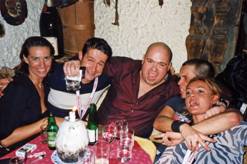 Now he dropped out of the limelight and moved to Berlin flicking the reset button and starting afresh. As he had been ill previously with malaria (delaying his input with Jam & Spoon projects at the time such as ‘Tripomatic Fairytales 3003’) he had lost 30kg and now took himself to his new place of work on foot or on bike. His new job was organizing music for a fashion show and he started cooking for his friends again, as well as for charity. He started dreaming of opening a restaurant and even talked of having children with his new life partner. But it was sadly not to be.
Now he dropped out of the limelight and moved to Berlin flicking the reset button and starting afresh. As he had been ill previously with malaria (delaying his input with Jam & Spoon projects at the time such as ‘Tripomatic Fairytales 3003’) he had lost 30kg and now took himself to his new place of work on foot or on bike. His new job was organizing music for a fashion show and he started cooking for his friends again, as well as for charity. He started dreaming of opening a restaurant and even talked of having children with his new life partner. But it was sadly not to be.
Mark died in his Berlin flat on 11th January 2006 at the age of 39. He was found by his girlfriend Sinje, his heart had stopped beating during the night. His death was undoubtedly an accident, and against a backdrop of a new and happier life unfolding before him, particularly tragic.
Perhaps he was called to service on another plane of existence but when I heard of Mark’s passing away, the feeling was indescribable and frankly remains so to this day. Unbelievable then, so it remains deeply unreal now.
"We reap what we sow" - the motto Mark had tattooed around his neck a year before his death, remains a poignant intimation.
His funeral was attended by a line-up of celebrities, paying their last respects to the talented 'rock star' from Frankfurt-Sossenheim.
He is missed by the great many who never met him, but most of all by those who did. A man whose hallmarks were creativity, vitality and quality, a warrior who vehemently fought against the tirade of formulaic dance music emerging on the backbone of innovation he himself had participated in. It’s fair to say he managed to achieve more in his short lifetime than most ever will in theirs.
His spirit is, and always will be, in the very heart of dance music, and it lives on in the great halls of history and our memory.
"The creation of something new is not accomplished by the intellect but by the play instinct acting from inner necessity. The creative mind plays with objects it loves."
Carl Jung
RIP dear Markus.
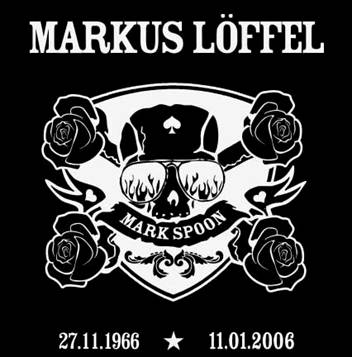
(Rolf Ellmer)
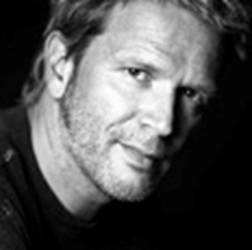
"Play is one of the highest spiritual forms of being. When we're in that state, we get lost in ourselves, which allows the mind to receive the message of the spirit."
Ellie Katz
Jam el Mar, (aka Trancy Spacer), is a highly respected versatile composer, producer, remixer and overall studio maestro, active in the dance music scene since at least 1991. A musical pioneer of our time, the earliest credits assigned to him would probably be for “Paradise Programme: The Rain” (music) followed by the dynamic ‘B.G. The Prince of Rap’ project. The latter was very successful spawning several hits including ‘This Beat is Hot’ (a worldwide hit even reaching the American Billboard Charts), ‘Take Control of the Party’, ‘The Power of Rhythm’ resulting in an album of the same name. This project, with all the inherent character of this era in dance music history is superb. Load up ‘This Beat is Hot’ Original Club Mix and whack up the volume – a time capsule to music heaven! At the same time he was busy with his other project, namely Dance 2 Trance (with DJ Dag). A cutting-edge sound for its time, a playlist of this project today presents a vital, sparkling and contemporary production. A true test of time, and an exemplary result of hard work coupled with talent. But let’s rewind a bit…
 He started playing guitar at a very young age. Back in the 1980’s, having earned a diploma as a classical guitarist, an accomplished musician such as he could have easily forged a career as a solo performer, and undoubtedly that was an option at the beginning, later deciding he wasn’t ‘born for the stage’. Prior to his change of direction, he had delivered several solo concert performances, both on his own and with an orchestra, and even played with arguably one of the best – one Angel Romero. He was also influenced by several iconic high caliber groups, among them Pink Floyd, Deep Purple (especially the “Fireball” album), Jimi Hendrix (who actually inspired him to purchase and start playing electric guitar in the first place). However, the guitar road was not fate’s plan.
He started playing guitar at a very young age. Back in the 1980’s, having earned a diploma as a classical guitarist, an accomplished musician such as he could have easily forged a career as a solo performer, and undoubtedly that was an option at the beginning, later deciding he wasn’t ‘born for the stage’. Prior to his change of direction, he had delivered several solo concert performances, both on his own and with an orchestra, and even played with arguably one of the best – one Angel Romero. He was also influenced by several iconic high caliber groups, among them Pink Floyd, Deep Purple (especially the “Fireball” album), Jimi Hendrix (who actually inspired him to purchase and start playing electric guitar in the first place). However, the guitar road was not fate’s plan.
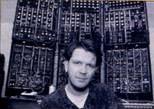 His first synthesizer ‘experience’ was hearing Keith Emerson (of the group ‘Emerson, Lake and Palmer’) play the Moog synthesizer. It was, as he described this experience, as the ‘light’ – the curtains had opened and revealed the true destiny. Additional influences at this time were Tangerine Dream’s “Rubycon” and “Phaedra” albums, though Edgar Froese’s (leader of TD) distancing his brand of electronic music from the dance genre didn’t make sense to Jam. An example of a work he regards highly for its union of sound and composition is Vangelis’s ‘The City’, as well as Dead Can Dance’s esteemed ‘Into the Labyrinth’. But to be honest, having hugely eclectic tastes, you’d just as easily find him listening to Mongolian, Native American music, or perhaps even a Bulgarian choir…? He said (quote): “Inspiration comes from every direction and there are no limits or borders”. To relax you may have found him studying Wagner sheet music to analyse the composition, structure etc. An all-embracing and humble creative genius then. And a really nice guy to boot!
His first synthesizer ‘experience’ was hearing Keith Emerson (of the group ‘Emerson, Lake and Palmer’) play the Moog synthesizer. It was, as he described this experience, as the ‘light’ – the curtains had opened and revealed the true destiny. Additional influences at this time were Tangerine Dream’s “Rubycon” and “Phaedra” albums, though Edgar Froese’s (leader of TD) distancing his brand of electronic music from the dance genre didn’t make sense to Jam. An example of a work he regards highly for its union of sound and composition is Vangelis’s ‘The City’, as well as Dead Can Dance’s esteemed ‘Into the Labyrinth’. But to be honest, having hugely eclectic tastes, you’d just as easily find him listening to Mongolian, Native American music, or perhaps even a Bulgarian choir…? He said (quote): “Inspiration comes from every direction and there are no limits or borders”. To relax you may have found him studying Wagner sheet music to analyse the composition, structure etc. An all-embracing and humble creative genius then. And a really nice guy to boot!
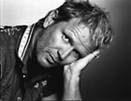 The first synthesizer Jam purchased was the Teisco SX400 (similar to the competing Roland Jupiter-4), followed by the Roland System 700 modular synthesizer. He also played in punk/jazz bands whilst making oddball electronic noises and music until Heinz (then Frankfurt’s Harthouse label manager) introduced him to Dag (Dag Lerner) with a proposition and idea of making a record. The dance music ‘bug’ bit him – the hypnotic bass from the dancefloor coming through the walls, the very idea of dance being part of human history since ancient times, somewhat akin to Yello’s perspective on the subject (“when we f*** up the planet we’ll all leave under a big dance” – Dieter Meier).
The first synthesizer Jam purchased was the Teisco SX400 (similar to the competing Roland Jupiter-4), followed by the Roland System 700 modular synthesizer. He also played in punk/jazz bands whilst making oddball electronic noises and music until Heinz (then Frankfurt’s Harthouse label manager) introduced him to Dag (Dag Lerner) with a proposition and idea of making a record. The dance music ‘bug’ bit him – the hypnotic bass from the dancefloor coming through the walls, the very idea of dance being part of human history since ancient times, somewhat akin to Yello’s perspective on the subject (“when we f*** up the planet we’ll all leave under a big dance” – Dieter Meier).
The attitude of dance music as being empirical, somewhat archaic but at the same time modern, mesmeric and emotional set the course for beats and success. His first true collaborative project with a regular creative partner, Dance 2 Trance enjoyed their success with what was one of the first real trance tracks produced ‘We Came in Peace’ (theme inspired by DJ Dag’s passion for American Indian culture). It was to be the start of a long and successful career, a great expedition, a quest, and the string of hits followed, among them “Where is Dag?”, “Hello San Francisco”, “Tranceophobia” and the big-break massive “Power of American Natives”. In his earlier record-buying years he used to go home and listen to them intently, dance music is by its very nature the antithesis of that. The aim then was to bridge the gap between the two disciplines – and that was achieved in ‘Moon Spirits’ – a superb piece of work.
The Jam & Spoon project with Mark (officially) commencing in 1992 however, eclipsed Dance 2 Trance and, having its own impetus and flavour, rose to become his new musical mouthpiece and outstanding artistic vehicle through which to channel his many talents.
 Of the partnership you could most definitely say he was the ‘quieter’ half. Perhaps that was part of the secret – Mark’s input embalmed by Jam’s interpretation and execution. What is certain is that teaming up with Mark gave birth to an enduring friendship (both personal and work) rewarding the globe with a consistently brilliant writing and production team. He has a stunning ability to formulate and blend sounds with musical textures enabling the realization of an idea as a united whole. A stickler for detail, his philosophy is simple - every project requires maximum effort to achieve the result worthy of a Jam & Spoon production.
Of the partnership you could most definitely say he was the ‘quieter’ half. Perhaps that was part of the secret – Mark’s input embalmed by Jam’s interpretation and execution. What is certain is that teaming up with Mark gave birth to an enduring friendship (both personal and work) rewarding the globe with a consistently brilliant writing and production team. He has a stunning ability to formulate and blend sounds with musical textures enabling the realization of an idea as a united whole. A stickler for detail, his philosophy is simple - every project requires maximum effort to achieve the result worthy of a Jam & Spoon production.
In the studio he is calm, relaxed, confident and focused. He ‘sees’ the sound he wants amidst the chaos of experimentation and like a master chef he chops it up, plays with it, caresses it to perfection to serve it up in another classic. The work hidden in the tinkering is the secret – the choices he makes, the talent persevering and unfolding another exquisite piece of music. As a master of his craft he believes that there is a lot of responsibility on the artist’s shoulders to create the best they can, for it to be successful – irrespective of it being a club track or a worldwide hit. It has to be the best. Jam el Mar’s productions are crisp, crafted and spacious. Bold yes, but lush and soothing. Characteristically his signature. Characteristically Jam & Spoon.
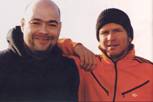 The sudden death of his friend and musical partner Mark affected him greatly. More than people could ever know. In his own words Jam stated that it was, and still is, an indescribable feeling and still misses him, his creativity and personality. Mark’s own cast of occasionally crazy ideas gave a certain life, dimension and clarity to his own, and he could do with him being around. Not a day passes however, that he doesn’t feel Mark’s presence with him, grimacing and bemoaning some track currently being worked on by his friend in Batschkapp’s most important room. The spiritual union and the friendship these two great masters endured is a rarity – not just in music but also in life.
The sudden death of his friend and musical partner Mark affected him greatly. More than people could ever know. In his own words Jam stated that it was, and still is, an indescribable feeling and still misses him, his creativity and personality. Mark’s own cast of occasionally crazy ideas gave a certain life, dimension and clarity to his own, and he could do with him being around. Not a day passes however, that he doesn’t feel Mark’s presence with him, grimacing and bemoaning some track currently being worked on by his friend in Batschkapp’s most important room. The spiritual union and the friendship these two great masters endured is a rarity – not just in music but also in life.
Since Mark’s death, Jam has been busy remixing and producing. His catalogue since 2006 includes work with German singer/actress Jasmin Tabatabai (whom he highly regarded as a songwriter and artist), an album for Eva-Diva and some great remixes. Let’s hope he’ll treat us to a few more!
 As a dance music producer, he is of the opinion (and not in a minority) that modern dance/trance music has mutated into something he’s not attracted to any more – formulaic and bland. In the absence of anything particularly fresh, it really could do with being re-inventing itself. The innovation is gone. And this is from someone who genuinely respects artists for what they do, knowing that what moves us also inspires us, and feeds our universe. It is in the studio that the greatest form of expression he knows can be realized into something lifelong and majestic.
As a dance music producer, he is of the opinion (and not in a minority) that modern dance/trance music has mutated into something he’s not attracted to any more – formulaic and bland. In the absence of anything particularly fresh, it really could do with being re-inventing itself. The innovation is gone. And this is from someone who genuinely respects artists for what they do, knowing that what moves us also inspires us, and feeds our universe. It is in the studio that the greatest form of expression he knows can be realized into something lifelong and majestic.
Happily married to the lovely Sandra Rominger he remains a lover of fine wines, travelling (taking some cool shots with his iPhone), playing some live sets, and perhaps the odd bit of MotoGP. He loves speed and the adrenalin rush (a trip in a jet fighter included) – a nice contrast to his exterior countenance! And of course he spends a lot of time with his dear Stella (daughter from a previous relationship) who most probably loves dad as much as we do!
 Thanks to his skill and talent, Jam & Spoon’s music made you move, evoked emotion and massaged your soul. Music that would sit in your head for days after listening, only to realise the days turn into years… Every eagerly awaited release has been phenomenal thanks to the combined talents of Mark’s club-rooted musical input and Jam’s songwriting, producing and visionary expression. It is my hope that perhaps he may release a solo album one day, as I truly believe modern musicians and producers could continue to learn a lot from him. But we’ll see.
Thanks to his skill and talent, Jam & Spoon’s music made you move, evoked emotion and massaged your soul. Music that would sit in your head for days after listening, only to realise the days turn into years… Every eagerly awaited release has been phenomenal thanks to the combined talents of Mark’s club-rooted musical input and Jam’s songwriting, producing and visionary expression. It is my hope that perhaps he may release a solo album one day, as I truly believe modern musicians and producers could continue to learn a lot from him. But we’ll see.
What is certain is that a Jam el Mar production will always surprise you, move you, anchor you in audio heaven and drench you in a splendid and enticing rush from start to finish.
Thank you Jam!
